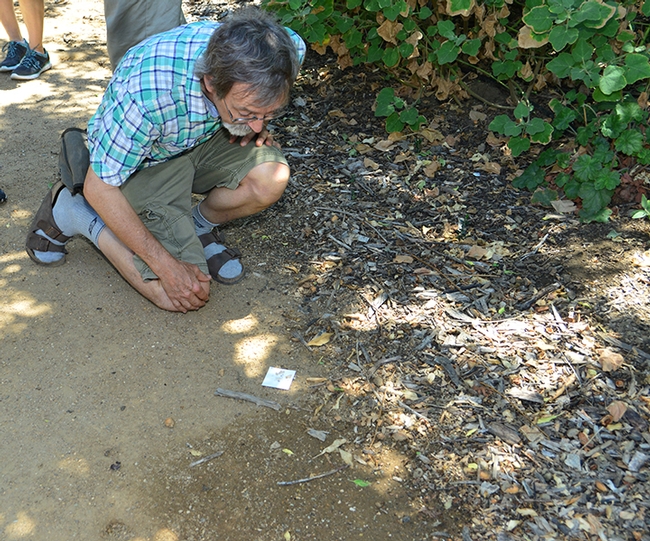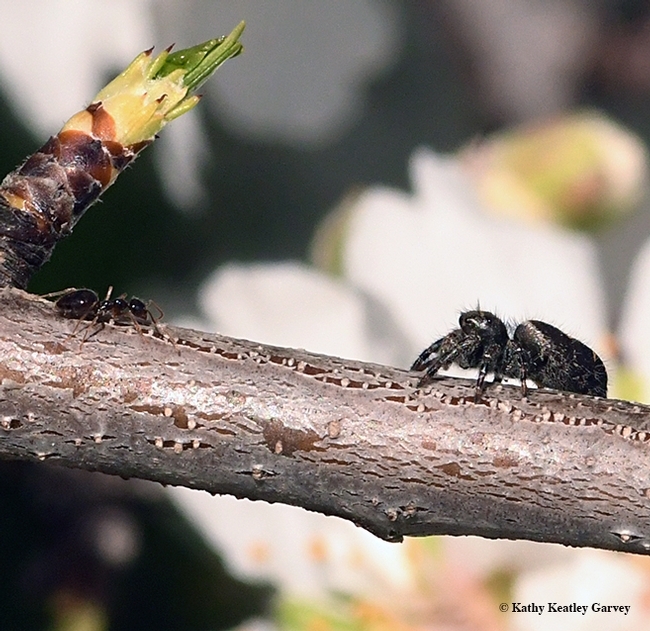- Author: Kathy Keatley Garvey
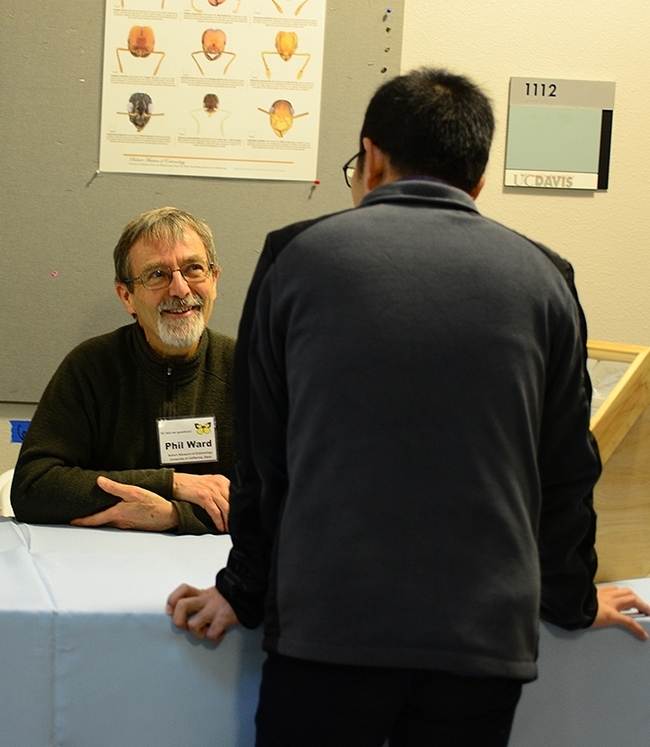
The laboratory of Professor Phil Ward, UC Davis Department of Entomology and Nematology, will provide live ants, specimens, information, and engage in one-on-one discussions about ant species at the Bohart Museum of Entomology open house from 1 to 4 p.m., Sunday, May 21.
The event, free and family friendly, will take place in Room 1124 of the Academic Surge Building, 455 Crocker Lane. The family arts-and-crafts activity will be to create paper ant headbands. "The current version has serrated mandibles, but people can go free form, too," said Tabatha Yang, education and outreach coordinator. "We're hoping for a colony of visitors with red headbands."
Among the Ward lab scientists scheduled to participate are doctoral candidates Jill Oberski and Zach Griebenow (both are expected to receive their PhDs this year), and third-year doctoral student Ziv Lieberman.
Griebenow and Oberski are veterans of UC Davis teams that won national championships in the Entomological Society of America's Entomology Games or "Bug Bowls." (See news story) UC Davis teams won national championships in 2022, 2018, 2016 and 2015.
The Bohart Museum featured Ward, a noted ant systematist, in a video, "All About Ants II" shown at the 2021 UC Davis Biodiversity Museum Day. It is posted on YouTube at https://youtu.be/d8eRNsD8dxo.
Ward offered an hour-long, introductory presentation on ants and answered scores of questions, drawing viewers from as far away as Virginia. He illustrated his talk with ant images taken by his former doctoral student Alex Wild (PhD from UC Davis in 2005), curator of entomology at the University of Texas, Austin, and a noted macro photographer (http://www.alexanderwild.com).
Ants originated about 120 million years ago (early Cretaceous), evolving from "wasp-like creatures," Ward said. They are members of the order Hymenoptera, and their closest relatives include honey bees, cockroach wasp and the mud daubers.
Ward related that live in long-lived colonies with (1) cooperative brood care (2) overlapping generations and (3) reproductive division of labor, the hall marks of eusocial behavior. He also pointed out:
- A typical ant colony contains a reproductive queen, numerous non-reproductive workers and brood (eggs, larvae, pupae)
- Colonies of ants can be thought of as superorganisms: tightly integrated and cooperative entities with complex systems of communication and division of labor (castes)
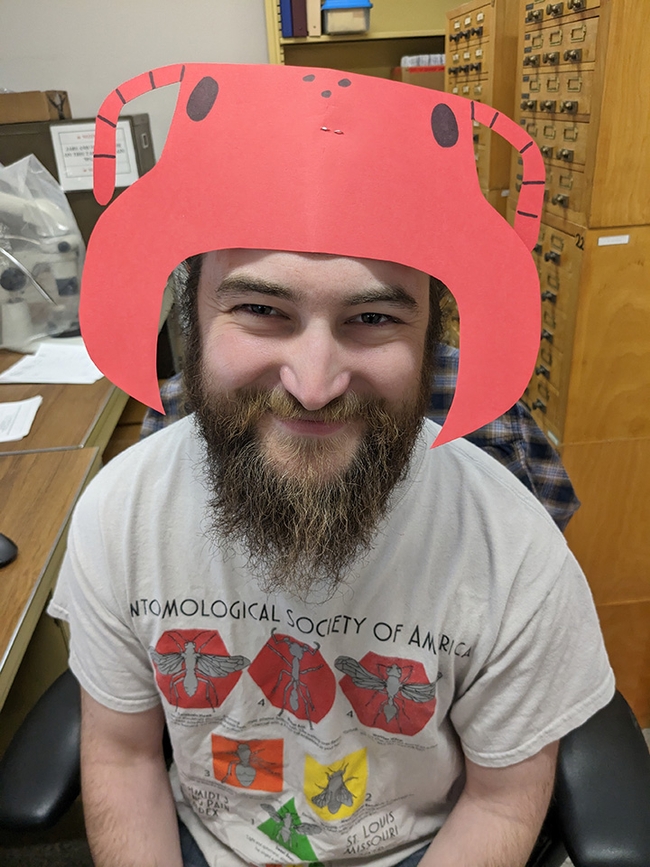
"Ants have occupied almost all of the world's land surfaces, from deserts to rain forests," Ward said in the video. "There's a few places they're absent. They're not in Antarctica, no surprise! They haven't colonized the Arctic and a few very high elevation tropical mountains, but apart from that, almost any place you go on land you'll see our friends, the ants. And they have assumed a quite a diverse array of ecological roles. Some of them are predators, others are scavengers, and some are seed collectors, and these habits vary tremendously among different species in different parts of the world."
Ants communicate largely by chemical (pheromones) and tactile means, Ward said. Their vision is "not particularly acute." He pointed out that that they lay a trail pheromones from the source of food back to the nest. They have alarm pheromones, causing other workers to act defensively. Chemicals also help ants distinguish their nest mates.
Some ants, like the Argentine ants, are pests. These invaders from South America "form super colonies, which means different colonies don't fight each other; they're all cooperating. And the other downside of Argentine ants is that they tend to eliminate native ants. So over the years I've lived in Davis, I have certainly noticed that native ants have declined as the Argentine ants have expanded. And they expand not just in, say, urban areas, but along certain natural habitats and one that they really like is the riparian habitat. So if you look along rivers and streams that are near urban areas, they're getting invaded by Argentine ants. And when they do, most native ants just disappear. This is a very tough aggressive ant and the mellow California ants can't handle an aggressive invader from South America. So they just disappear."
The Bohart Museum, directed by UC Davis distinguished professor Lynn Kimsey, houses a global collection of eight million insect specimens, plus a petting zoo (including Madagascar hissing cockroaches, stick insects and tarantulas) and a gift shop, stocked with insect-themed t-shirts, hoodies, jewelry, posters, books, and collecting equipment.
Founded in 1946, the Bohart is open to the public Mondays through Thursdays, from 8 a.m. to noon, and 1 to 5 p.m. More information is available on the Bohart website at https://bohart.ucdavis.edu or by emailing bmuseum@ucdavis.edu.
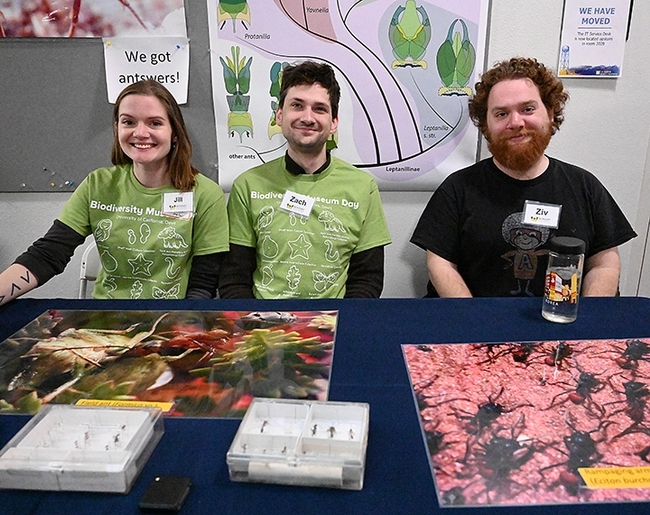
- Author: Kathy Keatley Garvey
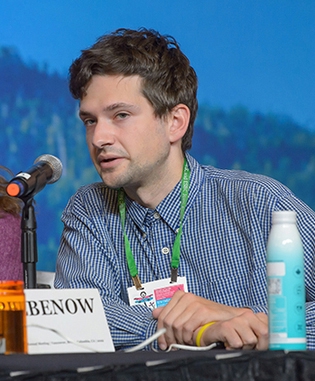
His presentation also will be virtual. The Zoom link:
https://ucdavis.zoom.us/j/95882849672.
Zach, a member of Professor Phil Ward's laboratory, says in his abstract: "Ants belonging to the subfamily Leptanillinae (Hymenoptera: Formicidae) are sister to nearly all other extant Formicidae. Miniscule and subterranean, little is known of them. Contrary to the collecting bias observed in most Formicidae, male leptanilline specimens are acquired more easily than workers or queens. The sexes are almost never collected together, and certain groups are known from males only—some of these being so bizarre as to not resemble ants at all. These restrictions obstruct our understanding of evolutionary relationships among the Leptanillinae."
"My thesis is aimed at leptanilline taxonomy that reflected phylogeny and integrated morphological data from both sexes. I here present the culmination of this work, reliant on phylogenomic inference from ultra-conserved elements (UCEs), supplemented by total-evidence inference from male morphological data and UCEs. I also here summarize my exploration of leptanilline male genital skeletomusculature, a surreal vista illuminated by micro-computed tomography, in collaboration with Ziv Lieberman and others."
Griebenow will be filing his dissertation before May 19. He joined the Ward lab in September 2017. He holds a bachelor of science degree (2017) in agriculture (entomology) from The Ohio State University. He graduated magna cum laude. He minored in music.
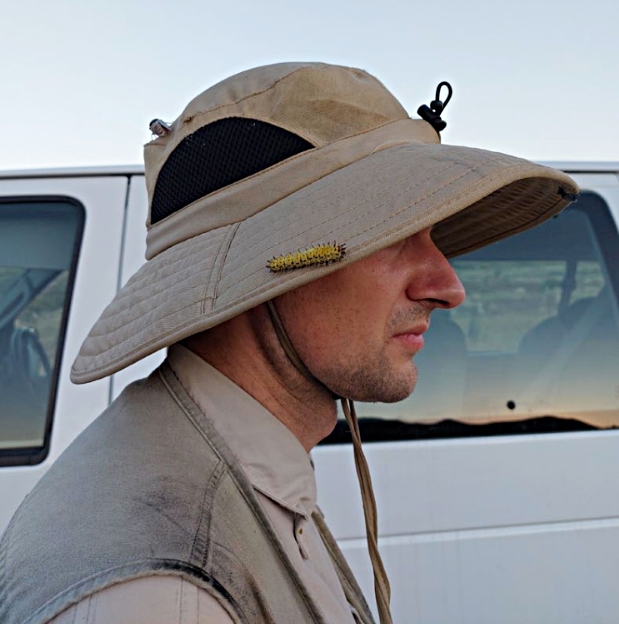
Griebenow was a member of the UC Davis Linnaean Games team (now renamed Entomology Games) that won two national championships (2018 and 2022) at the Entomological Society of America (ESA) meetings. He also was a member of Ohio State's Linnaean Games team that won second place in the 2017 national championship.
His publication list includes:
Griebenow, Z. H., Isaia, M., and Moradmand, M. (2022). Discovery of a troglomorphic ant (Hymenoptera: Formicidae: Leptanillinae: Yavnella laventa sp. nov.) in southwestern Iran, with the first description of the worker caste of Yavnella Kugler. Invertebrate Systematics, 36, 1118-1138.
Griebenow, Z. H. (2021). Synonymisation of the male-based ant genus Phaulomyrma (Hymenoptera, Formicidae) with Leptanilla based upon Bayesian total-evidence phylogenetic inference. Invertebrate Systematics, 35(6), 603-636.·
Griebenow, Z. H. (2020). Morphological and phylogenomic delimitation of tribes in the subfamily Leptanillinae (Hymenoptera: Formicidae), with a description of the male of Protanilla lini Terayama, 2009. Myrmecological News, 30, 229-250.
Department seminar coordinator is urban landscape entomologist Emily Meineke, assistant professor. For technical issues (Zoom), she may be reached at ekmeineke@ucdavis.edu. (See complete list of spring seminars.)
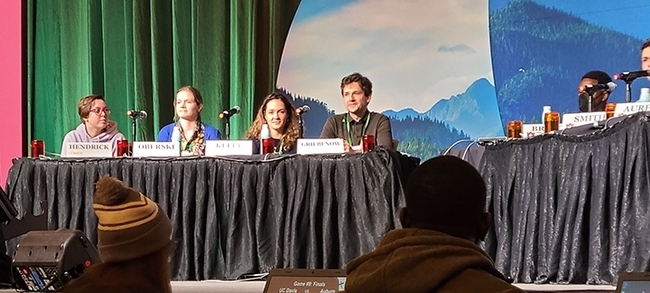
- Author: Kathy Keatley Garvey
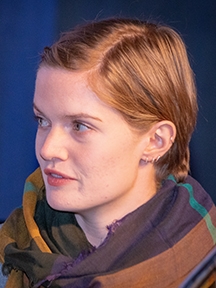
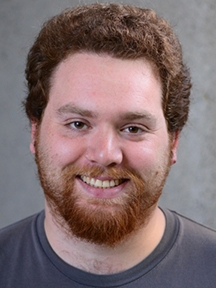
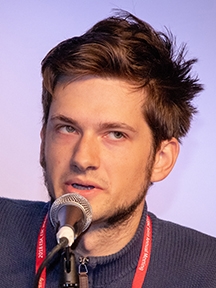
That's just some of the information to be showcased at the UC Davis Biodiversity Museum Month program on Saturday, Feb. 13 from 11 a.m. to noon when three doctoral students in the Phil Ward lab, UC Davis Department of Entomology and Nematology, take the helm. Oberski, a fourth-year doctoral student, and Ziv Lieberman, a first-year doctoral student, will talk about the diversity of ants and field questions, followed by doctoral candidate Zach Griebenow's presentation on his research.
Then on Saturday, Feb. 20, from 11 a.m. to noon, Professor Phil Ward will host "All About Ants," billed as a "fun and lively question and answer session." The programs are free and family friendly. See http://biodiversitymuseumday.ucdavis.edu/live-programs.html for the Zoom links.
Zach Griebenow
Griebenow grew up in rural Kentucky and received his bachelor's degree in entomology in 2017 from The Ohio State University, undertaking undergraduate research with distinction on species boundaries in the Puerto Rican fauna of the subterranean termite Heterotermes (Griebenow et al. 2017).
"As so everyone in the Ward lab, I study how different groups of ants are related to one another, and why they look and behave the way that they do," he said. "Specifically I study an obscure group called the Leptanillinae, which have no common name. As ants go, they are strange, and we know very little about them. So far, I have confidently teased out the major evolutionary relationships among leptanilline ants (Griebenow 2020; Griebenow, in press), but there is a lot more work to be done, particularly in comprehending the often bizarre structural modifications seen in the male Leptanillinae (legs that look like toothbrushes, etc.)."
Ziv Lieberman
Lieberman, born and raised in California, studied at the College of Marin before transferring to UC Davis to major in evolution, ecology and biodiversity, with a minor in insect evolution and ecology. "Prior to UC Davis, I spent several years working abroad for the California Academy of Science documenting historical ant specimens," Lieberman said. "At the end of my undergrad, I published my first paper, a revision of the poorly-understood (and very cute) African species of the ant genus Discothyrea."
In the Ward lab, Lieberman studies "ant evolution, specifically focusing on connecting evolutionary relationships (the ant 'family tree') with anatomy, using a combination of next-generation imaging techniques and large-scale genetic analyses. In particular, I am interested in describing and comparing internal anatomical features which are usually ignored, and understanding how these traits contribute to biodiversity."
Jill Oberski
Oberski grew up in Minnesota. "I was fascinated by insects from a very young age," she said. "I attended Macalester College, spent a few confused years on a pre-med track, and ultimately discovered a career in entomology was feasible and worth pursuing. This has led me to Phil Ward's ant systematics lab at UC Davis, where I'm now a PhD candidate."
"My research centers on the ant genus Dorymyrmex, which is commonly found all over the Americas," Oberski said. "Even though they're extremely common (Davis itself is home to two species!), we have no idea how many species there really are. In addition to discovering and naming these species, I'm really interested in biogeography and ancient history: Where did Dorymyrmex originate? How are the North American species related to the South American species? And how did they disperse before the isthmus of Panama was connected?"
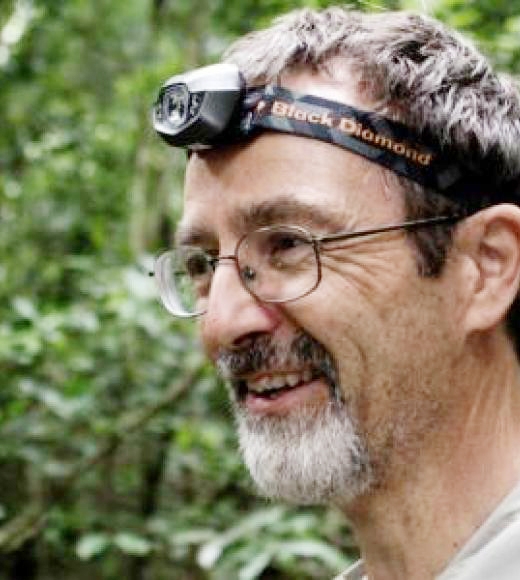
Professor Ward teaches California insect diversity, insect taxonomy and field ecology, and introductory biology (the tree of life). His research interests include systematics, biogeography and evolution of ants; ant-plant mutualisms; phylogeny and speciation. He holds a bachelor of science degree in biology from Queens University, Canada (1973) and a doctorate in zoology from the University of Sydney, Australia (1979).
Due to the COVID-19 pandemic, the 10th annual UC Davis Biodiversity Museum program is all virtual this year via webinars and pre-recorded presentations, and takes place throughout the month of February. The science-based event traditionally occurs on only one day--the Saturday of Presidents' Weekend, when families and friends gather on campus to learn first-hand about the UC Davis museums and collections.
This year's biodiversity event is showcasing 12 museums or collections:
- Anthropology Museum
- Arboretum and Public Garden
- Bohart Museum of Entomology
- Botanical Conservatory
- California Raptor Center
- Center for Plant Diversity
- Häagen-Dazs Honey Bee Haven
- Nematode Collection
- Marine Invertebrate Collection
- Museum of Wildlife and Fish Biology
- Paleontology Collection
- Phaff Yeast Culture Collection
For more information and the schedule, access these two formats on the UC Davis Biodiversity program website: (1) live talks and demonstrations and (2) pre-recorded talks and activities. Information on the biodiversity museum events also appear on social media, including Facebook, Instagram, and Twitter, @BioDivDay.
To help support the Biodiversity Museum event, contributions are being accepted through a month-long crowdfunding campaign program at https://crowdfund.ucdavis.edu/project/24310.
